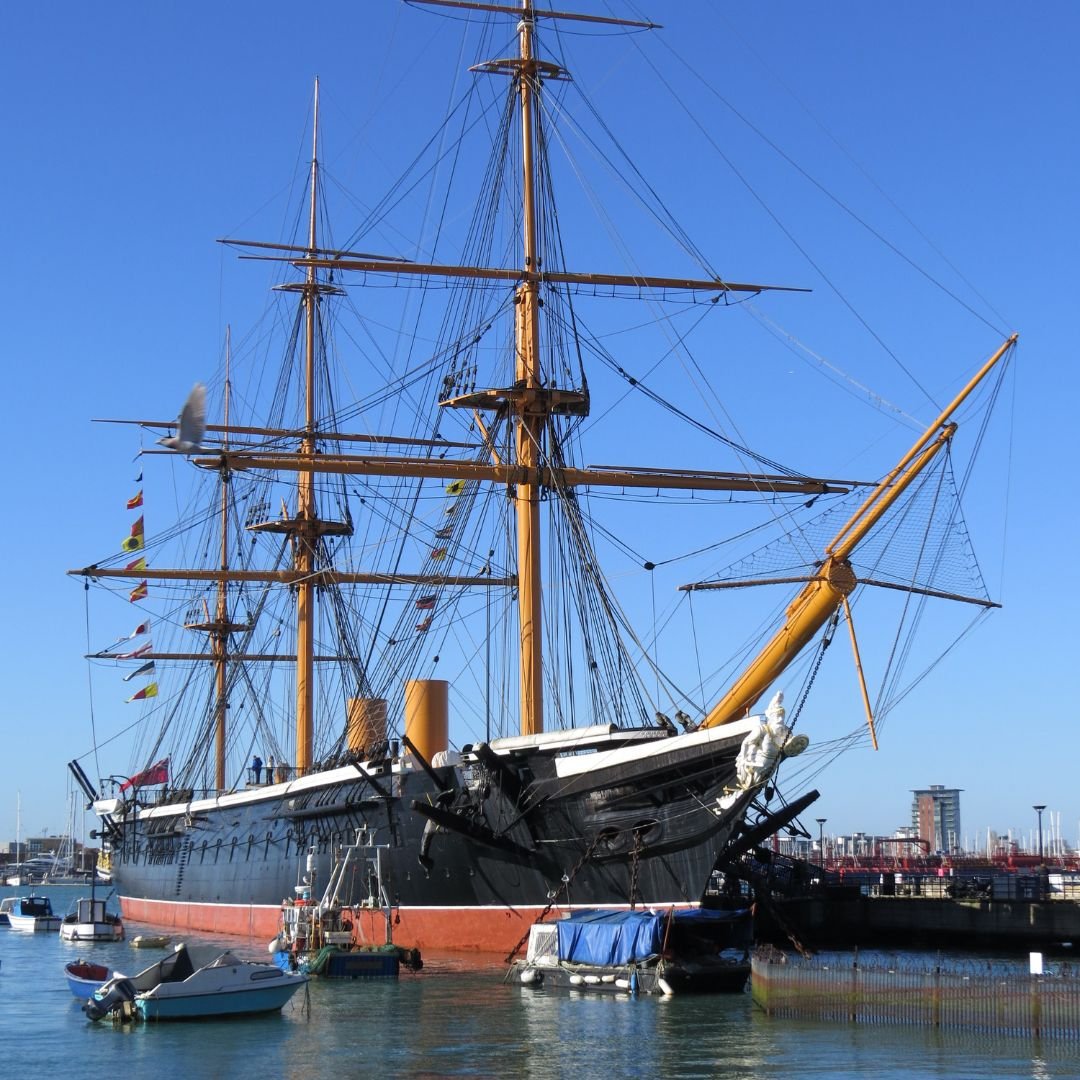HMS Warrior: Britain's First Iron-Hulled Armoured Battleship
HMS Warrior was Britain's first iron-hulled, armoured battleship built for the Royal Navy in 1859–1861.
HMS Warrior is a 40-gun steam-powered armoured frigate.
It was the largest, fastest, and most powerful warship of Queen Victoria’s fleet, it now serves as a museum ship in Portsmouth.
When built HMS Warrior was the most advanced ship in the world, an absolute terror of the ocean, and unlike anything that had come before.
Fitted with 202 armour plates, each weighing 4.8 tonnes, she was still capable of reaching speeds of 14.4 knots.
This made her faster, more durable, and deadly in combat. It’s easy to see why she became Queen Victoria’s favourite ship.
This new type of battleship signalled a significant evolution in the Royal Navy, being the first departure from traditional wooden ships.
Unlike most later ship armour, Warrior's armour was made by a process of hammering rather than rolling.
Based on tests at Shoeburyness in October 1861 when the Warrior was launched, it "was practically invulnerable to the ordnance at the time in use".
All the guns (one example pictured above) could fire either solid shot or explosive shells.
The 68-pounders could also fire molten iron shells, filled with iron melted in a furnace between the two forward boilers.
The 40-pounder Armstrong guns were replaced with a better design of the same calibre in 1863.
Despite being steam-powered, HMS Warrior was also fitted with masts and enough sails to cover 13 tennis courts!
The ship's crew comprised 50 officers and 656 ratings in 1863.
The majority of the crew had to do physically demanding tasks; one such duty was the raising of the heaviest manually hauled anchors in maritime history.
The day-to-day life of her crew differed little from those on the navy's traditional wooden-hulled vessels.
The majority of the crew lived on the single gun deck of the Warrior; these crewmen slept in hammocks slung from the sides and deck beams, with up to 18 men between each pair of guns.
The officers berthed in the rear of the ship in small individual cabins; the wardroom was also the officers' mess.
The captain had two spacious, well-furnished cabins.
Of the ratings, 122 were Royal Marines. As an experiment during the ship's first commission, all of Warrior's marines were from Royal Marine Artillery; subsequently some marine infantrymen were assigned as was the usual naval practice.
The marines manned the aft section of guns and slung their hammocks between the crew's accommodation and the officers' cabins.
During her service HMS Warrior toured extensively, welcoming over 300,000 visitors during a 12-week tour of Britain in 1863.
These cruises allowed the general public to see HMS Warrior in unprecedented detail and today, the interior has been recreated this tradition for a modern audience.
Having been fully fitted out in her original splendour, she is ready to continue welcoming visitors to Portsmouth Historic Dockyard.
Today, the ship is restored and back at home in Portsmouth, Warrior now serves as a ship museum, monument, visitor attraction, private venue and more.
Visitors can enjoy exploring her beautifully recreated interior, the burnished glory of her revolutionary engine rooms, and discover the secrets behind this iron-hulled legend.
The attraction has great reviews on TripAdvisor.
A recent vistor said: “We visited HMS Warrior on a rainy November morning using our Ultimate Explorer ticket (well worth the money).
”We were lucky enough to have a guided tour from one of the volunteers, Mike Hill. The ship is beautiful in its own right but Mike made such a difference to our visit.
”He’s extremely informative, fun and full of facts that we wouldn’t have learned had we walked round alone.”
Another person added: “The warrior is my favourite ship on HMS dockyard Portsmouth, because it’s relatively relaxed, not hidden behind glass or limits to touch or walk on.
”You can get a guided tour, or just spend time on board getting the real feel of this amazing Victorian war ship, go down deep in the hull.”
If you enjoyed this blog post, please follow Exploring GB on Facebook for daily travel content and inspiration.
Don’t forget to check out our latest blogs below!
Thank you for visiting Exploring GB.
















